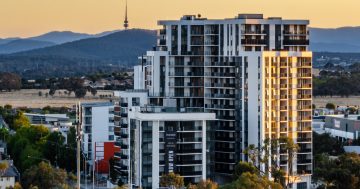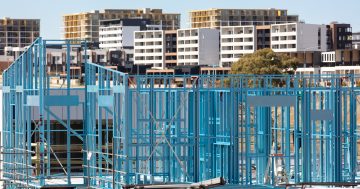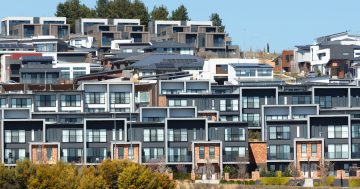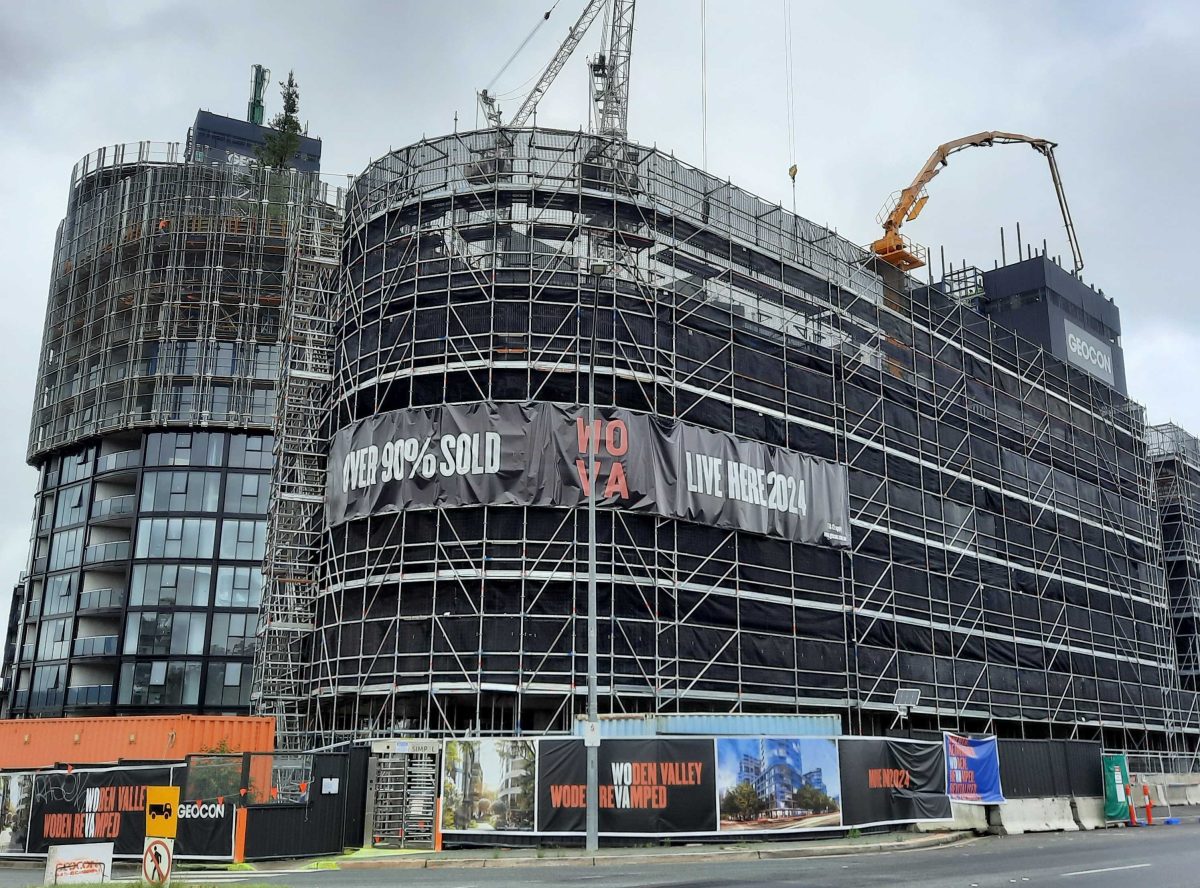
Geocon’s massive WOVA development in Woden is looking at completion in 2024. That’s nearly 800 apartments. Photos: Ian Bushnell.
Reading the property tea leaves is a popular and lucrative pastime, but as Canberrans have found this year, the results can often be confusing and contradictory.
Last week, SQM Research forecast residential property prices to fall in Canberra in 2024, more than that predicted for other cities like Melbourne and Sydney. Up to 10 per cent under one worst-case scenario.
In September, KPMG was far more upbeat. Its crystal ball said houses would pick up over the next nine months to rise by 4.4 per cent and then surge by nearly 10 per cent by the end of the 2025 financial year.
Its forecast for units and townhouses was more sedate, seeing only a rise 0.9 per cent to the end of the financial year and by the end of the 2025 financial year by 2.8 per cent.
So who’s right?
It comes down to assumptions.
For SQM, it’s all about rising interest rates, restrained lending, an economic slowdown, less Federal Government spending and increased supply.
The modest rate of Canberra’s population growth and the national capital’s lesser intake of migrants compared to the big capitals are other factors that put SQM in the correction camp.
For KPMG, there won’t be enough properties on the market due to scarcity of available land, falling approvals, and slower or more costly construction activity. However, in Canberra’s case, it may have that one wrong.
Exacerbating this will be the levels of migration. This issue is getting an increasing amount of attention from economists and the Federal Government, which has hinted at a reset of intake targets.
Whether lower prices or higher prices are good or bad depends on what side of the property divide you sit.
But if you are renting or you want to buy, the signs are there that, in Canberra at least, the housing crisis is easing from a supply point of view, although rents and prices remain very high.
The vacancy rate of 1.7 per cent – it had been as high as 2 per cent – is far healthier than what it was a year ago, and rents have also come down.
Home price rises have been meagre to the point of being flat in recent months, and while the high end of the market is still posting records – elsewhere, sellers have had to reassess their expectations amid more choice and properties taking longer to move.
Part of that extra choice is the surge in new apartments and townhouse developments, something the SQM report says will continue in 2024 when a strong rise in dwelling completions is expected.
All you have to do is drive around the town centres or Northbourne Avenue to see that happening, with so many apartment towers coming out of the ground and growing at an incredible rate, as if the builders are making up for lost time and money during the pandemic and immediate aftermath.
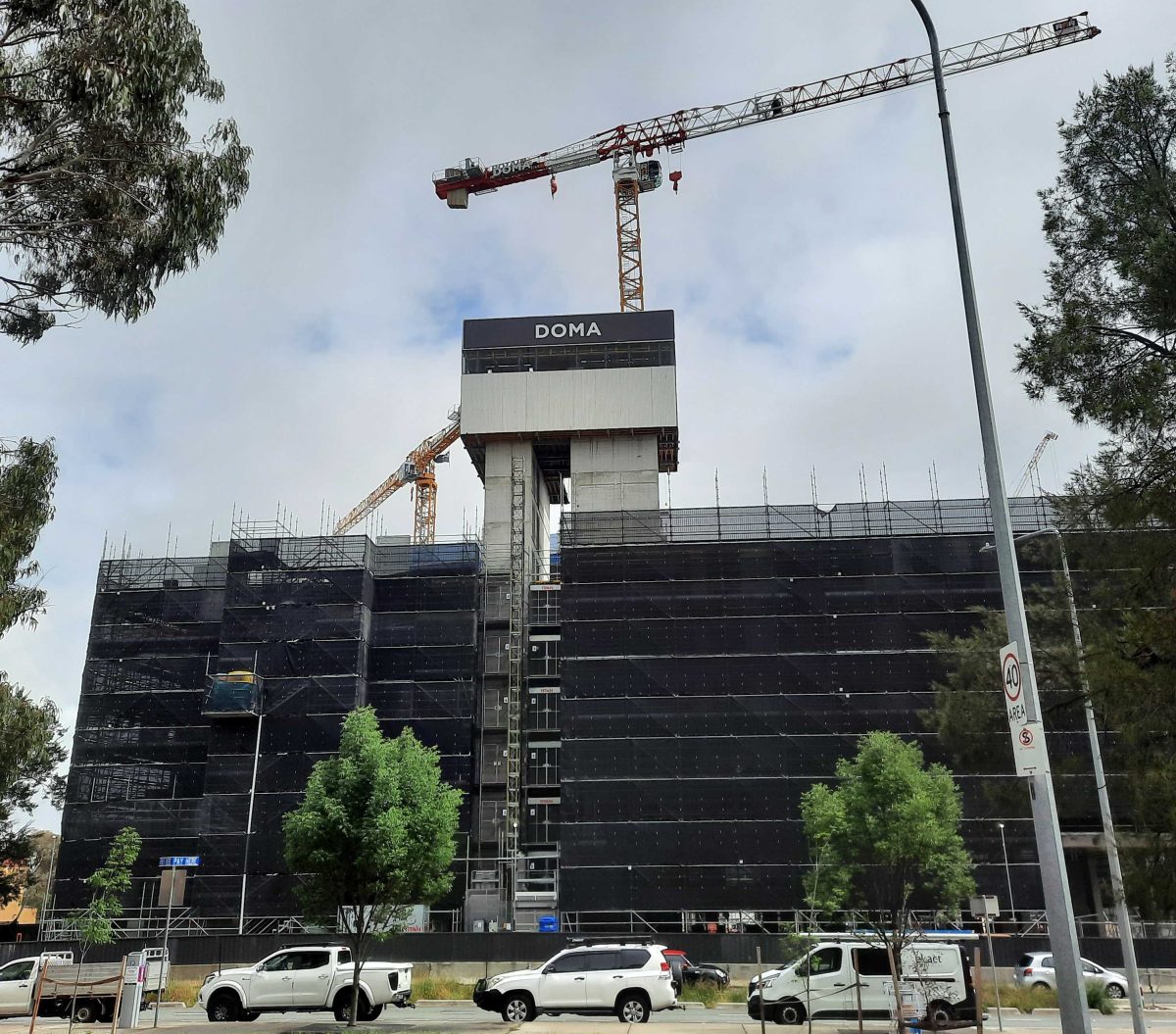
Doma’s Melrose Place development in Woden. One building is dedicated to affordable housing.
Woden is a prime example, where at least six projects are underway, including Geocon’s massive WOVA development across from the pool, boasting 90 per cent sold, and DOMA’s Melrose Place project near the library, both of which have four towers.
At the big roundabout, Amalgamated’s Oaks Precinct has its final tower well underway.
Across from Westfield on the west side, Zapari is preparing the ground for the 16-storey Shard, and next to the Lovett Tower, Keggins’ W2 residential block is going up.
On the other side of the town centre, another multi-tower behemoth is getting ready to rise out of the ground – Hindmarsh’s Woden Green.
Outside the town centres, the new suburbs in Gungahlin, Molonglo and Ginninderry continue to expand with a mix of densities.
That’s thousands of new homes across Canberra.
At a time of declining affordability, many buyers are opting for what suits their budgets, and in Canberra, that’s new apartments and townhouses.
The increase in build-to-rent projects will also add to much-needed rental stock.
Apartments and townhouses don’t suit everybody, families in particular, but they are adding significantly to the overall pool of housing, and that is important.
That pool will become even bigger when money from the Federal Government finally makes its way into the bottom end of the market to boost the amount of public and community housing for those suffering rent poverty or locked out altogether.
After so much talk of a housing shortage, will all this activity mean a housing glut – of apartments, at least?
Probably not, but the ACT Government says its goal is to have supply bubbling along ahead of demand.
But whatever the scenarios and how they play out, the overall supply of housing – to own or rent – is increasing relative to population, and that is long overdue in Canberra.












